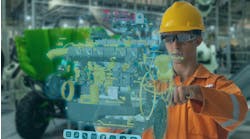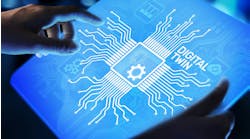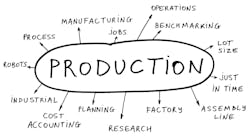Case Study: Digital twin shortens design process by 30%
By Mike Hodge, digital twin solutions, Keysight
Digital-twin technologies have captured the imagination of innovators everywhere with the promise of transforming industries and giving early adopters a competitive advantage. But as industry leaders build their digital-twin strategies, they must balance laying the foundation for future opportunities with ensuring business continuity today. So how do digital twins fit into the current business landscape? And are companies that have integrated them into their workflows seeing positive results?
Research-and-development teams spanning industries like automotive, telecommunications and semiconductors use digital twins to improve product-development processes. So far, companies using digital-twin environments to simulate real-world conditions in their labs are seeing significant benefits—from better product performance to faster time to market. And this is driving adoption.
One company recently demonstrated that using digital twins to build more advanced semiconductor components could reduce its design process by 30%. Altum RF specializes in high-performance radio frequency (RF) semiconductor components for applications like 5G networks and aerospace and defense systems. When the company set out to fill a gap in the marketplace, it quickly discovered that bringing its new product to life would require an innovative design approach using digital twins.
Situation
Altum RF saw an opportunity to create a high-power RF amplifier for microwave applications that didn't exist in the marketplace. Its new single monolithic microwave-integrated circuit for applications in the 1-20 GHz range would need to meet stringent performance specifications on power, gain and bandwidth while withstanding extreme environmental conditions. It was an ambitious goal, but one that could be achieved using a new foundry GaN HEMT process that was still in the prerelease phase.
The engineering team at Altum RF faced a difficult decision. It could wait for its newest technology to be released to work with a complete process-design kit and all the test devices needed to characterize and fit its new circuit models, or the team could advance its new product by shifting more of the workflow to the virtual world.
As a new company, addressing an unmet need in the marketplace would transform its business. Altum RF opted to collaborate with Keysight to speed the development of its latest product using digital twins.
Designing with digital twins
Electromagnetic side effects pose the biggest threat to integrated-circuit performance because they can alter voltage levels and damage semiconductor devices. If engineers can assess the potential electromagnetic impacts of bonding and packaging earlier in the development process, they can optimize the design to avoid costly problems before they happen.
Using Keysight software, Altum RF transformed its mechanical drawings into a 3D-digital model and ran simulations using digital twins to replicate the real-world effects of bonding and packaging on its circuit models. In addition, the company used the digital simulation to see how the circuit design performed in extreme environmental conditions depending on the application.
These insights helped the team identify design issues and optimize product performance before building the physical prototype, which reduced the risk of errors and rework later in the process. Connecting the team with a single ecosystem of design, simulation and test data made it easier to adapt to any changes in the new technology process they incorporated into the new circuit design.
Benefits of designing with digital twins
1. Improve productivity and alignment to accelerate R&D
With digital-twin technology, the team has a single ecosystem of design, simulation and test data. This removes silos between groups and makes it easier for the group to understand and adapt to changes. In addition, real-time visibility into project metrics and progress avoids incurring costly setbacks. Finally, the continuous-feedback loop enables organizations to optimize future projects.
2. Achieve first-pass success
Using complex, detailed models to simulate designs before building a prototype avoids the physical product failing. Building test parameters to match virtual models significantly reduces the amount of rework and retesting, accelerating the entire model, design and build lifecycle.
Using digital twins, Altum RF was able to identify the design that would create the most value for its customers earlier in the process. All stakeholders had real-time visibility into the project metrics, which supported faster and improved decision-making. In the end, Altum RF succeeded with its first prototype—shortening the design process by 30% and significantly accelerating time to market.
Digital-twin technology is transforming the way products are designed and built. The ability to create a virtual model in the lab enables organizations to simulate the real world, improving product performance and accelerating time to market. And as products get increasingly complex and interconnected, digital-twin technology will become essential.



